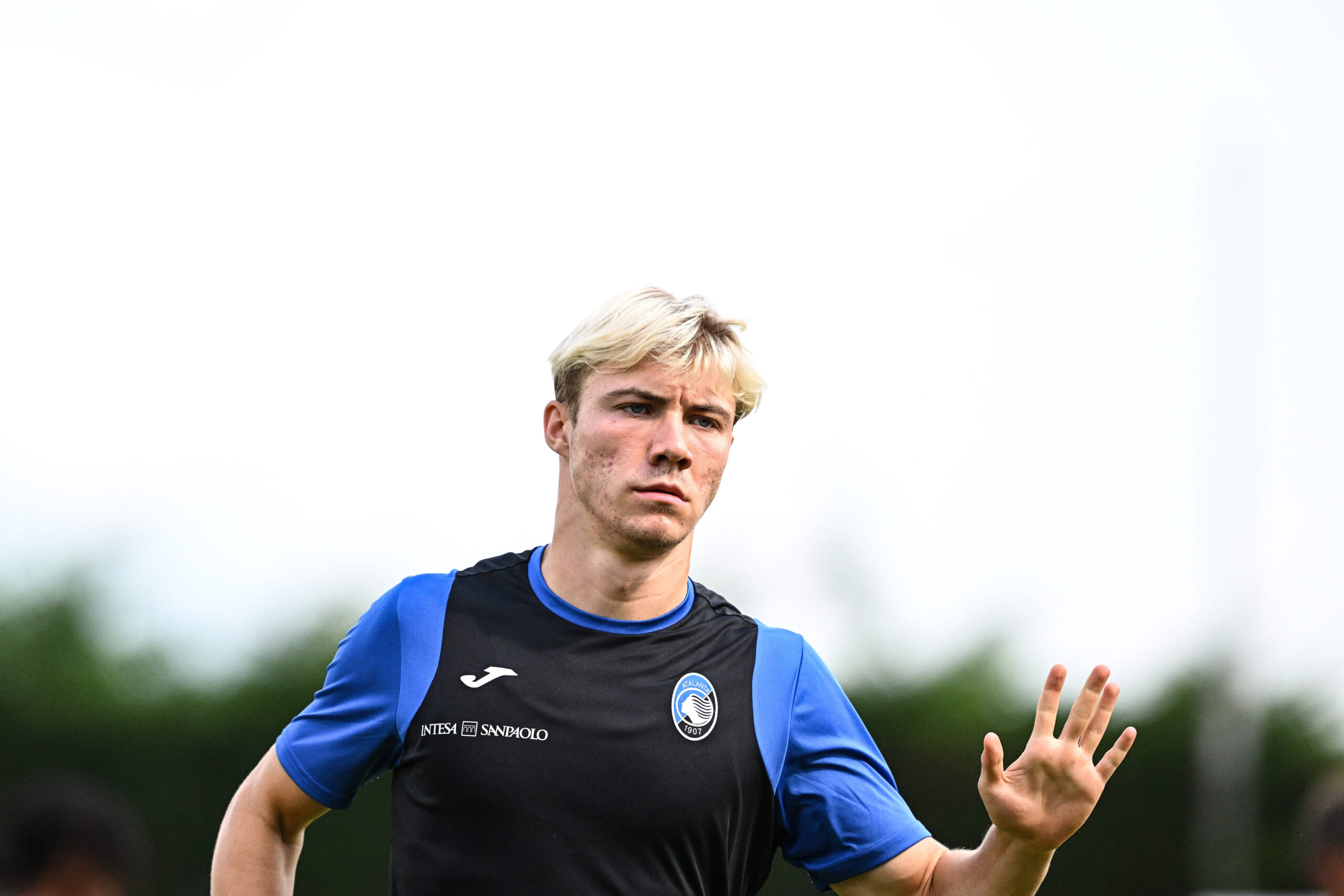
Manchester United’s number one target for the centre forward right now looks to be Danish sensation Rasmus Højlund, who is still a fairly new name in European football.
Rasmus Højlund is one of the most interesting striker talents in world football, and recently went viral for a stunning hat-trick on his first international start – there is no doubt why Erik ten Hag and Manchester United are keen to sign him
He does, however, remain somewhat of an enigma to many football fans, and the reported asking price of £60 million has raised many eyebrows. United are reportedly looking to do a deal for £50 million plus add-ons, and even this lower fee has left many wondering.
Read More: “I deserve it” – André Onana details what Manchester United fans should expect
Here, UtdDistrict profiles Højlund, for the fans to get an understanding of the kind of player he is and the impact he can have on United.
General
Name: Rasmus Winther Højlund
Age: 20
Nationality: Danish
Position: Centre forward
Height: 1.91m (6 foot 3)
Footedness: Left
Club History: Atalanta (2022-Current), Sturm Graz (2022), FC København (Youth-Jan 2022)
Physical
In terms of his physical qualities, Rasmus Højlund profiles similarly to Erling Haaland and Darwin Núñez. He is a tall, physically strong player who possesses a lot of explosive power in his legs.
Paired with the long strides that come with the height, this power allows the Dane to get away from players easily over shorter distances and completely burn players for speed in open spaces, much like the aforementioned two players do.
One standout physical quality of Højlund’s is his coordination. Whilst the likes of Haaland and Núñez can sometimes look somewhat awkward when moving, Højlund is remarkably coordinated and looks smooth in motion.
His leg power extends to his ability to strike through a football, which he does powerfully. Some work on consistency is needed, but he has shown that he is able to hit the ball both powerfully and accurately. He has proven this with both of his feet too, an added bonus.
Another advantage that comes with his frame is his increased wingspan. The 20-year-old has a strong upper body, and these longer arms are tools that Højlund employs to create extra separation from defenders. This is something the best strikers do.
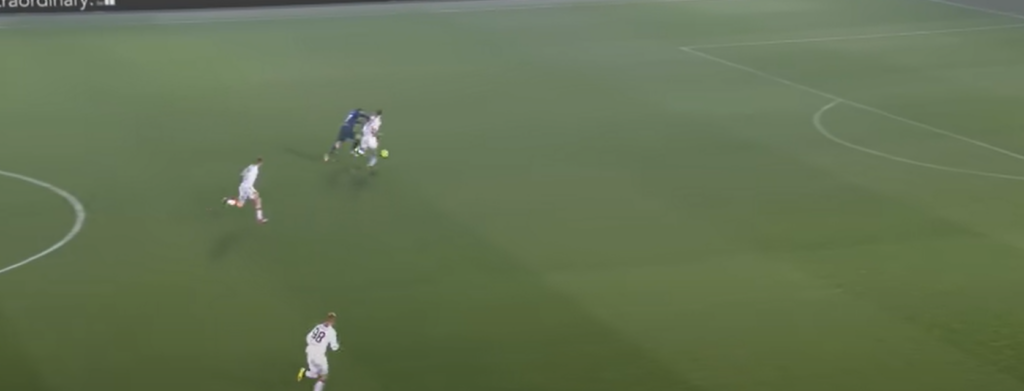

When in the box, Højlund attacks space with both speed & intensity and micro-adjusts his body freakishly well when attacking the ball, opening up more of the goal as a target for him to potentially score in and aiding him in guiding cutbacks.
When holding up the ball, Højlund has the strength to pin defenders and the use of his longer legs and arms combined with his physical power allows him to keep the ball further away from the player engaging him more than most strikers can. Again though, some work on the consistency of his hold-up game is needed.
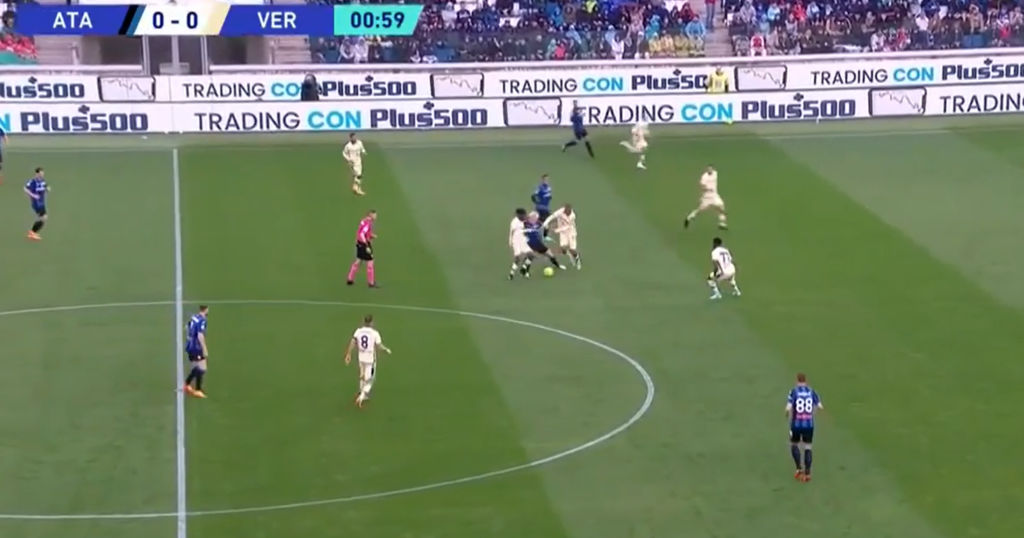
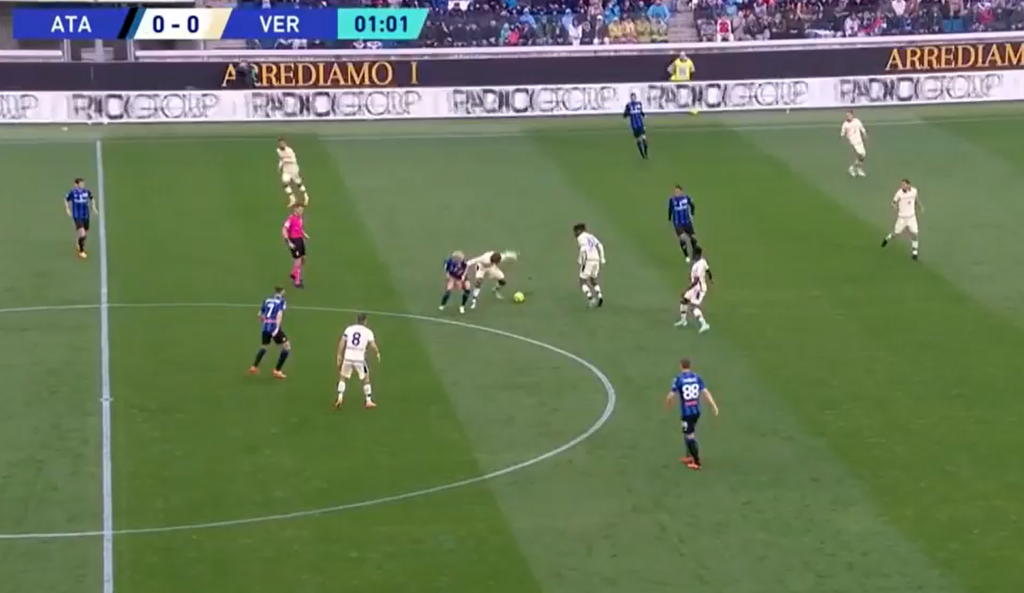
One area in which Højlund can improve is in his aerial game. He won just 37.1% of his aerial duels in Serie A last season (via FBref) and has scored just one headed goal in his senior career, which came for Denmark.
Technical
Able to control the ball well with his feet and upper body, the Atalanta man has a good technical base which aids him in hold-up play. Often attempts flicks to nearby runners with his torso, as well as with his feet.
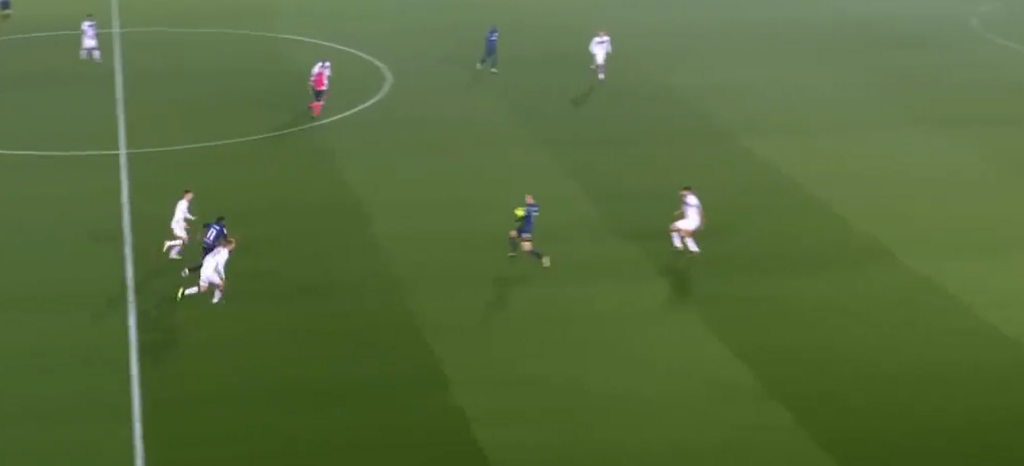
When carrying the ball, Højlund keeps it under control well and this mix of technical quality, power, and coordination makes him a dangerous ball carrier and isolation dribbler, also keeping the ball well in tighter spaces despite his size.
He is comfortable drifting out wide and taking players on in these areas too, similar to Romelu Lukaku. This ability to drift wider could suit Marcus Rashford, who likes to come inside. Expect lots of rotations between the pair should Højlund sign this summer.
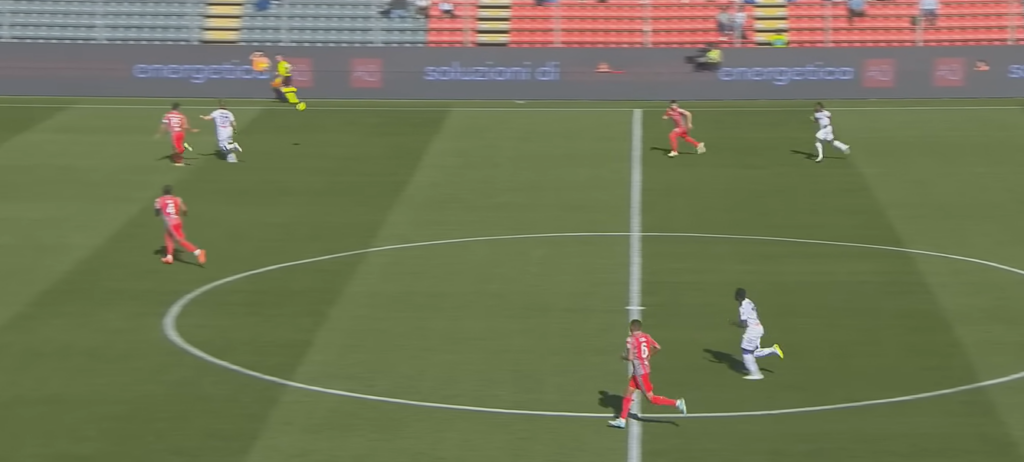


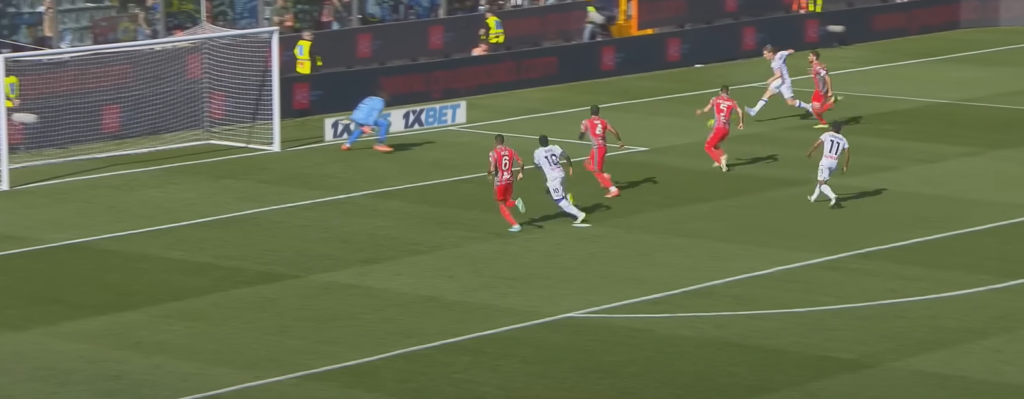
As mentioned previously, Atalanta’s number 17 strikes through the ball powerfully but somewhat inconsistently and this is true for his technique too. He is able to strike through it with excellent technique but must work on doing this more consistently. Erik ten Hag will be a good coach to help him do this.
The Denmark forward is not reliant on the ball being settled in order to get good contact and strike it, a very promising trait for a centre forward. His ability to finish cutbacks translates well to how Ten Hag’s teams have historically created chances.
Højlund is capable of picking out good passes and attempts lots of clever layoffs and flicks, but the weighting of his passes is inconsistent.
Mental and Tactical
For current club Atalanta, Rasmus Højlund plays as a lone centre forward in Gian Piero Gasperini’s 3-4-2-1, although has lined up in a nominal front two for both club and country before. When playing in a front two, he generally players further ahead than his partner.
Atalanta play an incredibly direct style of football, as illustrated by DataMB‘s radar, and so his proficiency in transitions will aid Erik ten Hag who wants his team to be able to dominate these situations. However, he will need to play in settled possession more at United. Although he has many of the qualities to fit this and will have time with Ten Hag and his coaches.

Højlund is a very brave player, even at his young age he is not afraid to demand the ball when he makes his runs and is not afraid to try things when he receives the ball. Failure does not put him off or make him shy away.
The player has a very aggressive mindset, he attacks everything with intensity and this intensity translates out of possession too. When he does press, Højlund is intense and his speed off the mark makes it more difficult for the player being pressed, as they have less time to make a decision.


Like Anthony Martial, the Atalanta forward adjusts his body to cut passing lanes and close off angles well although the 20-year-old can pick his pressing moments better, sometimes not pressing at a time when it would be right to initiate a high press or not returning to his centre forward position straight away after dropping deeper.
Rasmus Højlund reads space excellently, having a good understanding of when to drop deeper, when to run in behind and attack space, and what runs to make. On top of this, he times his movements very well.
This comes down to his scanning, something which he does frequently when involved or potentially involved in his side’s attacking sequences, and also when out of possession too. It helps him to build an image of his surroundings in his head, supplementing his decision-making processes. However, sometimes he could check his shoulder better or scan more when on the ball.
His tendency to run behind the defensive line, coupled with his physical qualities, naturally forces teams to defend slightly deeper when his side has possession. In the final third, this could create opportunities for United’s midfield players to attack the box with late runs – something they all excel at.
Despite being predominantly left-footed, Højlund does not have a particularly pronounced bias toward either channel. He runs both the left and right channels frequently and understands when to drift to either side or remain central, linking back to his perception of space.
Højlund can sometimes be reliant on his left foot when carrying the ball, limiting what he can do with it in some scenarios. This is something that Erik ten Hag can work on.
The Dane reads ball movement well in the box, which along with his ability to micro-adjust his body whilst moving and his physical profile makes him such a threat in terms of attacking cutbacks. He also possesses an array of dummy movements and fakes to fool defenders and create extra space for himself.
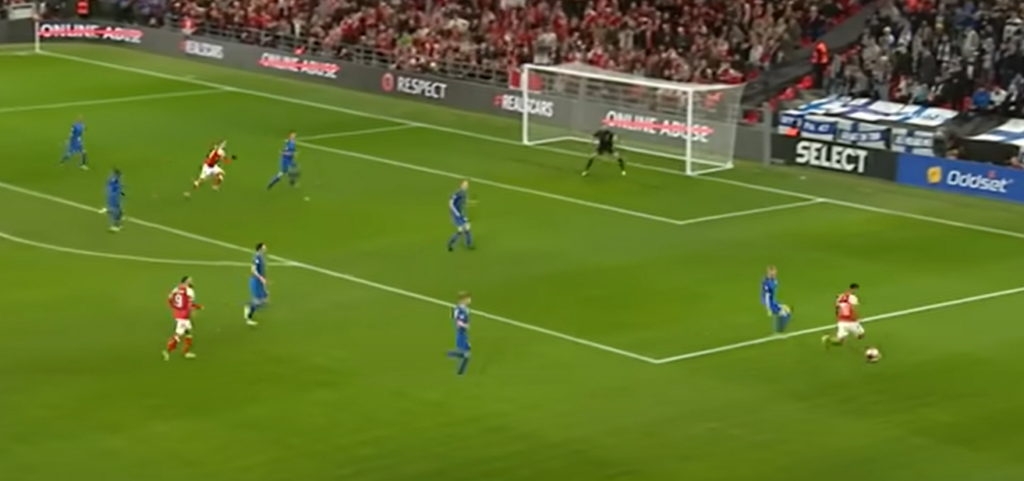
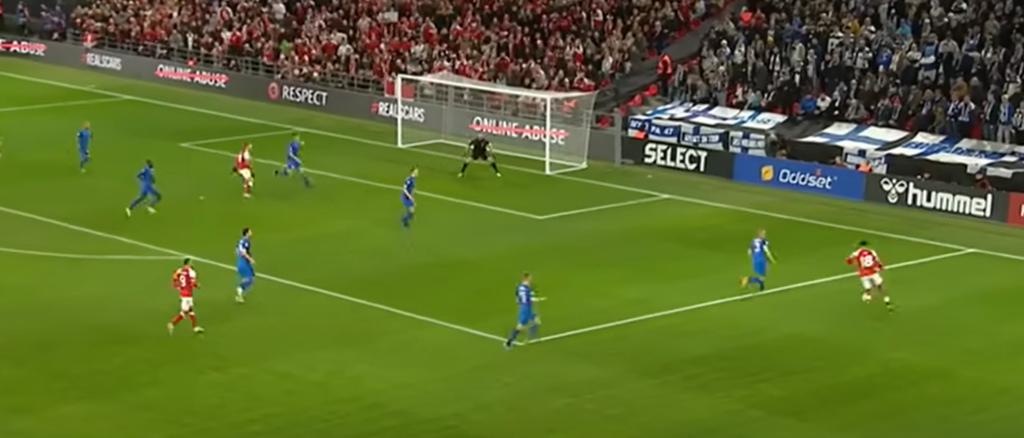
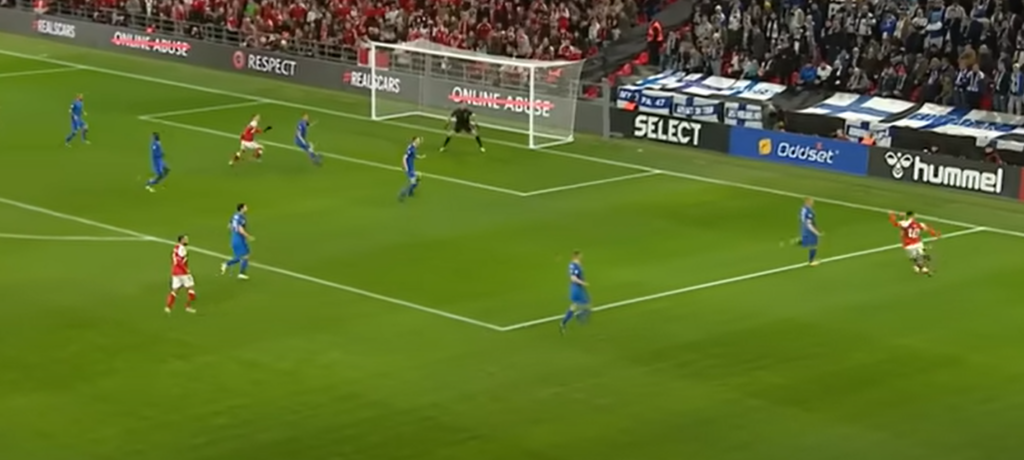
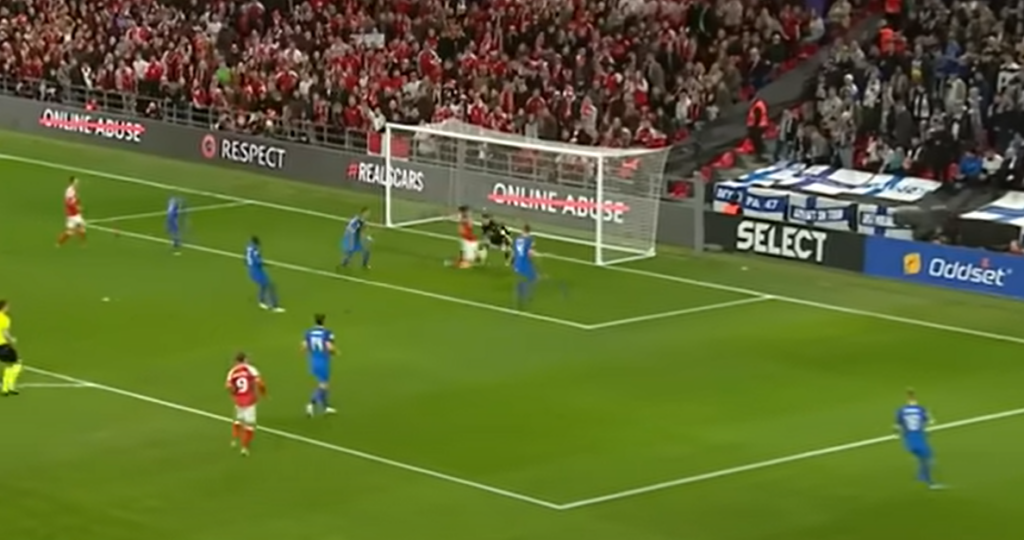

Most of the player’s shots come inside the box, he does not attempt too many long shots with an average shot distance of 12.9 yards and an npxG/shot figure of 0.18 [FBRef]. United have a number of players who like to take lower xG shots, so Højlund’s focus on higher-quality chances would help the side generate better shots.
Højlund does however need to work on reading aerial flight and timing his jump in order to improve the aforementioned weakness in aerial duels, as he has the physical tools to be a dominant force in the air.
Comparison
Rasmus Højlund is not the only player who Manchester United have been linked to for the number nine position this summer. Other targets at points have included Gonçalo Ramos and Harry Kane.
Erik ten Hag has also shown a lot of appreciation for Anthony Martial’s profile, so it is worth comparing his profile to the Denmark forward’s profile too. The comparison tool used belongs to DataMB.
Firstly comparing to Ramos.


We can see here that Ramos is more aerially dominant than Højlund as of right now, ranks higher for both xG and non-penalty goals, and receives more passes, showing him to be more of a focal point number nine as of right now. The visual analysis reflects this too.
Where Højlund does challenge him is in his number of offensive actions, passes into the box and his expected assist numbers. This lines up with the fact that Benfica are a more complete, possession-dominant side than Atalanta, who rely more on direct attacks and Højlund excels in these. It also offers an explanation as to why Ramos receives many more passes, although as of right now he is a better hold-up player than Højlund.
Ramos is probably a better fit for United right now than Højlund is, as well as currently being the better player. Although, Højlund does have some strengths over him and in the long term could turn out to be a better player than the Portugal forward. He will also be less expensive, with Benfica wanting at least £90m, or possibly more.


Two images that speak 1000 words. Harry Kane remains one of the most complete strikers in world football, beating Højlund at everything other than non-penalty goals per 90 mins. It is important to note that Kane played significantly more football than Højlund, scoring an impressive 25 non-penalty goals in the Premier League.
Kane has also played in a team whose radar is like a weaker version of Atalanta’s, bar the possession. Tottenham were a side reliant upon transitions and were incredibly poor last season. Without Kane, they would have been significantly poorer. It is clear to see why Erik ten Hag wanted him so much, but the £100 million asking price is too much for United. Kane would also be a short-term signing, and Højlund would give United more long-term upside.


Now when compared to Anthony Martial, the results are interesting. We can see that last season, United created counters better than Atalanta did, although also dominated the possession better. United’s best football came with Martial, and his radar indicates that he is more involved in play than Højlund is. But the problem is that Martial’s injury issues are now too much.
Højlund already offers more as a goal threat than Martial does, and his game will only round with time. As of right now, he may not be the finished product, but should Martial stay then when he is fit it would give United another option up front, taking some pressure off Højlund.
Marcus Rashford is also an option, and if needed then Jadon Sancho has put in some good performances as a false nine. But for the direction Ten Hag wants to take United in, bringing in Højlund to replace Martial would make for a smart decision.
Summary and Verdict
To summarise, Rasmus Højlund is one of the finest young striker talents in world football right now. He has an incredibly desirable physical profile, paired with a good technical base and elite mental attributes. He also has a season of experience in one of Serie A’s stronger sides, playing for a good tactician in Gasperini.
What is clear about Højlund is that he is still raw, and still inexperienced at the top level. He played around 21 90s for Atalanta last season in the league and cup, and these are his only minutes in one of Europe’s top seven leagues. His only European experience is 128 minutes in the UEFA Conference League as an 18-year-old for København.
He has a profile and qualities that right now help United, and in the long run, can become a world-class player for Erik ten Hag. If United could get a fee of around 55 million Euros, then it would be on the expensive side but still a fairly good deal.
However, it would be crucial that fans temper expectations, it is unlikely that he fires United to a title in his first season. He would need time, patience, and development. The fact he is still young and fairly raw, but with a potentially very complete skillset, means that Erik ten Hag would be able to mould him into his image of a number nine for his Manchester United team.
All in all, Rasmus Højlund would be a good signing made even better if United can get an older, more short-term centre forward who maybe can’t play every week but shares the load with the youngster a little and gives him someone to learn off. If Anthony Martial can conquer some of his fitness issues, then potentially he could be this.